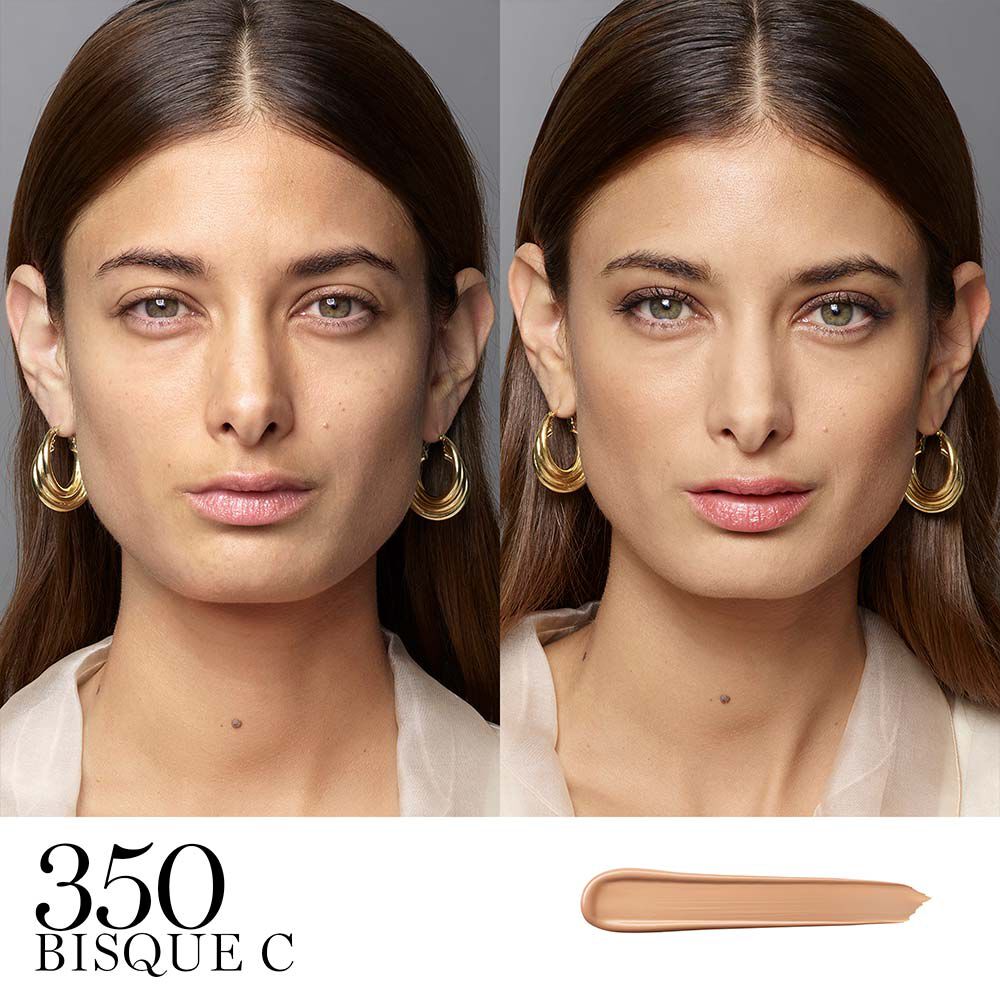El contorno es una de las técnicas de maquillaje preferidas para ayudar a esculpir y dar forma al rostro, pero ¿alguna vez pensó en usar un producto diferente como un corrector para contornear? A menudo se usa para cubrir ojeras, enrojecimiento o brotes; el corrector es un producto que no solo se limita a sus necesidades de cobertura. Aprenda a contornear con un corrector.
¿Puedo usar corrector para contornear?
Sí. ¡Las fórmulas correctoras líquidas y cremosas son adecuadas para el contorno! Con las herramientas y técnicas adecuadas, cualquier persona puede crear una apariencia esculpida usando corrector.
¿Cómo elijo el tono correcto de corrector para contornear?
Elegir el tono correcto de corrector para contornear es el factor más importante a considerar al contornear con corrector. Para obtener los mejores resultados, elige un tono de corrector que sea de dos a tres tonos más oscuro que tu tono de piel natural. Es mejor usar un corrector con un matiz frío o neutro, ya que esto ayudará a imitar las sombras naturales de la piel, mientras que un corrector de tonos cálidos puede parecerse más a un bronceador.
¿Qué corrector es mejor para el contorno?
Para contornear con corrector, recomendamos nuestro corrector Teint Idole Ultra Wear All Over. Nuestro corrector liviano de cobertura completa es adecuado para usar en todo el rostro y su fórmula ultramezclable no se arruga ni se torta, dejando la piel cómoda e hidratada hasta por 24 horas. El corrector viene en una gama de tonos que se pueden usar para contornear, dar una apariencia elevada y resaltar diferentes áreas del rostro. El aplicador está diseñado para una aplicación precisa, lo que facilita la creación de un aspecto definido y esculpido.

¿Cuál es la mejor manera de aplicar corrector como contorno?
Dependiendo del producto que utilice, es posible que tenga un aplicador incluido diseñado para una aplicación de precisión, o que desee usar un pincel de maquillaje pequeño y preciso para dibujar el corrector en las áreas donde desea contornear. Asegúrese de comenzar lentamente y aplicar el corrector en capas delgadas, ya que es una cobertura más completa y, a menudo, un producto pigmentado más alto que los productos de contorno tradicionales. Es mejor aplicar un poco y acumularlo gradualmente en lugar de aplicar demasiado a la vez. Intente usar una esponja de maquillaje como una licuadora de belleza para mezclar el producto en la piel.
¿Qué orden debo usar al aplicar corrector en el contorno? ¿Debo contornear con corrector antes o después de aplicar la base?
El orden en que elija aplicar el corrector que utilice para contornear dependerá de su estilo de maquillaje preferido. Para un aspecto más natural, uniforme y de segunda piel, considere aplicar su contorno antes de aplicar la base (esta técnica también se conoce como pintado insuficiente e implica aplicar su rubor, bronceador, contorno y corrector antes de aplicar la base y puede aliviar la necesidad de usar tanto producto). Para una técnica más clásica y un estilo más terminado, aplique el corrector de contorno después de aplicar la base.
Dónde contornear
Los mejores lugares para contornear son las áreas del rostro donde hay sombras naturales y las áreas que generalmente se asocian con un rostro esculpido (piense en pómulos cincelados)
Estas áreas incluyen: debajo de los pómulos, alrededor de la mandíbula, alrededor de las sienes/la línea del cabello y por los lados de la nariz.
¿Cómo debo combinar mi contorno?
La mezcla es clave cuando se trata de contornear con corrector. Para obtener los mejores resultados, use un cepillo para pulir o una esponja húmeda para maquillaje para difuminar el corrector. Es mejor usar un cepillo o esponja con un movimiento de pulido o golpeteo, ya que esto ayuda a mezclar el producto sin esfuerzo y eliminar cualquier exceso que pueda hacer que su contorno luzca demasiado intenso; también se pueden usar las puntas de los dedos, pero es posible que no den tanto efecto de contorno natural. No olvide mezclar los bordes del contorno para evitar líneas difíciles.
Tutoriales del corrector
Cómo cubrir los círculos oscuros






